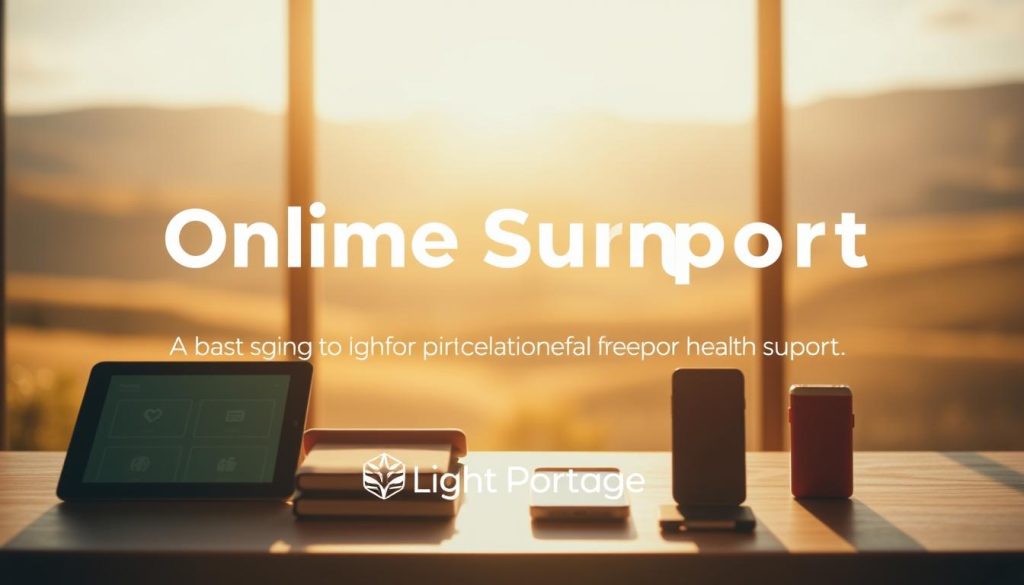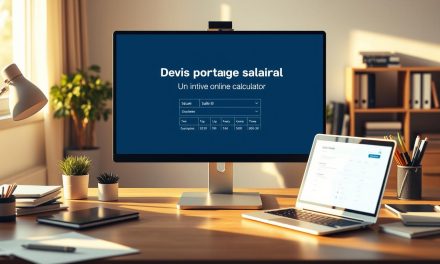Picture this: You’re juggling deadlines, client calls, and the pressure to stay productive—all while working alone. For many independent professionals, this isn’t just a hypothetical scenario. It’s daily life. And when challenges pile up, it’s easy to feel isolated or overwhelmed.
Recent studies show that 1 in 5 U.S. adults faces psychological struggles each year. Among freelancers, anxiety and burnout rates are even higher. Why? Irregular income, blurred work-life boundaries, and limited access to workplace benefits create unique stressors.
Take Naomi Osaka’s decision to step back from tennis tournaments as a reminder: prioritizing well-being isn’t weakness—it’s wisdom. Her choice sparked global conversations about balancing ambition with self-care, especially for those without traditional support systems.
This is why tailored solutions matter. Specialized resources designed for independent workers can bridge gaps in care, offering strategies that fit flexible careers. Whether it’s managing stress or building resilience, having the right tools transforms how you navigate challenges.
Table of Contents
Key Takeaways
- Independent professionals face higher risks of burnout due to unpredictable workloads.
- 1 in 5 adults experiences psychological challenges annually, with freelancers disproportionately affected.
- High-profile cases like Naomi Osaka highlight the importance of prioritizing self-care.
- Customized support systems address unique needs in non-traditional work environments.
- Actionable strategies improve both professional performance and personal well-being.
Overview of the Freelance Mental Health Landscape
Independent professionals now represent 35% of the global workforce, according to a 2023 McKinsey report. This shift brings both freedom and challenges, particularly in maintaining well-being. Let’s explore the terrain where flexibility meets vulnerability.
Current Trends and Challenges
Three primary stressors dominate self-employed careers:
- 68% report income unpredictability as their top concern
- 52% struggle with social isolation
- Only 14% have employer-sponsored benefits
A recent Upwork survey reveals alarming patterns:
| Stress Factor | Traditional Employees | Independent Workers |
|---|---|---|
| Financial Anxiety | 39% | 67% |
| Work-Life Balance | 52% | 29% |
| Access to Counseling | 71% | 18% |
Impact of Modern Work Realities
Irregular schedules disrupt circadian rhythms for 43% of respondents in a Stanford study. The same research found project-based workers sleep 90 minutes less nightly than office counterparts during busy periods.
These pressures create a critical need for specialized resources. Platforms offering flexible counseling hours and peer networks are becoming essential tools for sustainable careers. Proactive strategies help maintain both productivity and personal fulfillment.
The Importance of Mental Health for Freelancers
Independent workers face a paradox: freedom fuels creativity, but isolation erodes stability. While 78% of traditional employees report access to workplace wellness programs, only 12% of self-employed individuals benefit from similar structures. This gap creates measurable differences in professional resilience.
Why Prioritizing Well-Being Matters
Neglecting psychological needs directly impacts productivity. A 2024 Harvard study found self-employed professionals with consistent self-care routines complete projects 23% faster than those ignoring their needs. « Sustainable success requires balancing ambition with awareness, » notes organizational psychologist Dr. Elise Marlow.
Comparisons with Traditional Employment
Corporate roles often provide built-in safeguards missing in independent careers:
| Resource | Traditional Roles | Self-Employed |
|---|---|---|
| Peer Support Networks | 84% | 19% |
| Stress Management Training | 63% | 11% |
| Paid Mental Health Days | 58% | 6% |
These disparities explain why burnout rates are 2.1x higher among independent workers. Proactively building systems—like structured work hours or peer collaboration strategies—can restore equilibrium. Your career thrives when you prioritize what fuels both output and joy.
Key Factors Impacting Freelancer Well-Being
The freedom of self-employment often masks hidden pressures. Three core challenges dominate: unpredictable pay cycles, blurred personal-professional boundaries, and scarce safety nets. A 2024 French Labor Ministry study reveals 74% of independent workers experience moderate-to-severe stress monthly—double the rate of salaried employees.
Income instability creates constant tension. Over 68% report checking their bank balance daily, while 53% delay essential purchases during slow work periods. This financial uncertainty triggers sleep disruptions for 41% of respondents, according to Sorbonne University research.
Time management proves equally taxing. Without structured routines, 62% work evenings or weekends to meet deadlines. « Clients expect 24/7 availability, but your energy isn’t infinite, » notes Paris-based consultant Léa Dubois. Her experience mirrors findings showing 58% struggle to disconnect from work communications.
Resource gaps compound these issues:
- Only 22% have access to subsidized counseling
- 79% lack employer-sponsored wellness programs
- Emergency savings last ≤3 months for 61%
These pressures create a cycle where work demands overshadow self-care. However, solutions exist. Implementing structured routines and financial buffers can restore equilibrium. Proactive planning transforms survival mode into sustainable success.
Practical Strategies for Managing Mental Health
Stabilizing your career begins with intentional design. For self-employed professionals, structured routines combat the unpredictability that fuels anxiety. Start by dividing your week into focused work blocks and protected downtime. Digital nomad Marc Lefèvre credits this approach: « Scheduling client calls only on Tuesdays and Thursdays gave me back my weekends. »
Financial planning reduces income-related stress. Allocate 30% of each payment to a dedicated emergency fund. Use apps like YNAB or Bankin’ to automate savings while tracking business expenses. This creates a buffer during slow months—a tactic 68% of successful independents report using.
Clear boundaries prevent burnout. Set firm rules for:
- Response times (e.g., answering emails within 24 hours)
- Work hours displayed in your email signature
- Payment terms outlined in contracts
Lyon-based designer Clara Renault saw her productivity jump 40% after implementing « no-screen Sundays » and morning meditation. « Replacing constant availability with intentional pauses made my work sharper, » she explains.
Address the lack of routine by anchoring your day with non-negotiable self-care. A 15-minute walk after lunch or pre-work journaling session creates stability. These small anchors build resilience against business pressures, transforming survival mode into sustainable success.
Effective Ways to Find Support and Resources
Building a sustainable career alone doesn’t mean going it entirely solo. Nearly 63% of independent professionals report feeling disconnected from peers—a gap that strategic connections can bridge. Engaging with others facing similar challenges reduces isolation while unlocking practical solutions.
Leveraging Community Platforms
Digital spaces like the Freelancers Union’s SPARK program offer structured forums for skill-sharing and mentorship. Members gain access to:
- Weekly virtual meetups with industry experts
- Template contracts for clearer client agreements
- Subsidized telehealth counseling sessions
Slack communities tailored to creative industries provide real-time collaboration opportunities. Paris-based copywriter Amélie Bernard credits her local #FreelanceDesigners group: « Having a safe space to discuss late payments or creative blocks changed how I approach tough projects. »
Proactive engagement with clients also builds mutual understanding. Share your preferred communication hours early in partnerships—57% of collaborators adjust their expectations when boundaries are clearly set. These strategies transform potential stressors into opportunities for growth.
freelance mental health support
Modern self-employment demands more than business savvy—it requires accessible care tailored to unpredictable schedules. Over 43% of project-based workers experience psychological challenges like persistent worry or low motivation. Recognizing these patterns is the first step toward effective management.
Understanding Available Services and Tools
Digital platforms now offer flexible solutions for common struggles. Anxiety, mood fluctuations, and sleep disturbances rank highest among issues reported by independent professionals. Specialized services address these concerns through:
- 24/7 text-based therapy (Talkspace, BetterHelp)
- Cognitive behavioral therapy apps (Sanvello, Woebot)
- Financial stress workshops (Freelancers Union)
| Service Type | Traditional Access | Digital Solution |
|---|---|---|
| Therapy Sessions | 3-week wait | Next-day booking |
| Cost Per Session | $120-$250 | $65-$150 |
| Evening Availability | 12% | 89% |
How to Access Expert Help
Start by assessing your insurance coverage—many plans now include telehealth options. For those without benefits, platforms like Qare.fr provide sliding-scale pricing based on income. « Scheduling brief check-ins during low-energy work hours prevents crises, » advises Paris-based psychologist Dr. Sarah Jensen.
Follow these steps to build your support system:
- Complete online screenings to identify priority issues
- Compare provider specialties through verified directories
- Book introductory sessions with 2-3 professionals
Peer networks also play a crucial role. Platforms like Moka.care connect users with local therapists understanding gig economy pressures. Proactive care transforms temporary challenges into long-term resilience.
Leveraging Connections and Community Networks
Human connections shape professional resilience as much as technical skills. For independent workers, relationships built through shared experiences form lifelines during challenging projects. A 2024 study found those with strong peer networks report 41% lower stress levels than isolated counterparts.
Joining Support Groups and Online Communities
Platforms like Leapers—a global initiative for independent professionals—demonstrate the power of collective wisdom. Members participate in weekly virtual check-ins and resource exchanges. « These spaces let us normalize struggles others might dismiss as ‘just part of the job’, » explains Marseille-based developer Antoine Moreau.
Key benefits of active participation:
- Reduced isolation through regular interactions
- Practical solutions for client negotiations or creative blocks
- Access to localized meetups in cities like Paris and Lyon
French platforms such as Freelance Café and Moo.fr host monthly workshops blending skill development with peer mentoring. One Lyon-based copywriter reported securing three clients through her community’s referral network while managing seasonal anxiety.
Building these relationships requires intentionality. Start by dedicating 30 minutes weekly to engage in forums or attend hybrid events. As trust grows, so does your ability to exchange vulnerable experiences without judgment—a cornerstone of sustainable self-employment.
Digital Tools and Workspaces for Better Mental Health
Time-saving technology reshapes how independent professionals manage workloads. Digital workspaces cut administrative tasks by up to 11 hours weekly, per a 2024 Sorbonne study. This reclaimed time reduces burnout risks while boosting creative capacity.
Automating Tasks to Reduce Stress
Platforms like Moxie transform chaotic workflows into streamlined systems. Features include:
- Automated invoice generation with recurring payment options
- Centralized client communication logs
- Deadline tracking with smart reminders
| Task | Traditional Method | Moxie Solution |
|---|---|---|
| Invoice Creation | 45 minutes | 3 minutes |
| Payment Follow-Ups | Weekly manual checks | Auto-sent reminders |
| Project Updates | Scattered emails | Real-time dashboards |
Exploring Platforms Like Moxie
Specialized tools create unexpected benefits beyond time savings. Users report 29% fewer late payments when using integrated billing systems. « Seeing all client interactions in one place helped me spot patterns causing stress, » shares Marseille-based designer Élise Toussaint.
These platforms also foster professional communities. Built-in forums allow knowledge-sharing about:
- Negotiation tactics for fair compensation
- Local tax regulation updates
- Workspace optimization techniques
Adopting such tools creates structure in unpredictable careers. The right digital ecosystem turns survival mode into strategic growth—one automated task at a time.
Trends in Self-Employment and Mental Health

While setting your own schedule appeals to many, 58% of independent workers report heightened anxiety levels according to a 2024 EU labor survey. This paradox defines modern self-employment: greater autonomy often comes with unpredictable stressors that reshape psychological well-being.
- 79% value control over their workload despite income fluctuations
- Traditional job security ranks lower than schedule flexibility for 63%
- Those managing clear boundaries report 2.3x higher satisfaction rates
A comparative analysis shows striking contrasts:
| Factor | Self-Employed | Traditional Roles |
|---|---|---|
| Workload Control | 88% | 51% |
| Stress From Uncertainty | 67% | 29% |
| Job Satisfaction | 74% | 63% |
« Choosing which projects to accept gives me a sense of purpose, » shares Marseille-based developer Sophie Leroux. Her experience aligns with findings showing 68% prefer variable income over rigid corporate structures.
To harness these benefits while minimizing risks:
- Design work hours mirroring your energy peaks
- Use project management tools to visualize deadlines
- Schedule quarterly financial reviews
Balancing freedom with structure helps independent professionals maintain both creative drive and emotional resilience. The right systems transform potential stressors into sustainable advantages.
Data-Driven Insights from Recent Research
Recent data reveals critical patterns in how self-employed professionals manage workplace pressures. The 2024 Global Independent Workforce Survey highlights actionable strategies for maintaining stability amid uncertainty.
Key Findings from the 2024 Survey
Over 2,300 respondents identified their top challenges:
- 74% cite financial unpredictability as their primary stressor
- 68% report reduced motivation during slow work periods
- 41% leverage peer groups for emotional support
Organizations like Leapers provide structured solutions. Their programs connect members with local partners for resource sharing and skill development. One Paris-based graphic designer noted: « Monthly Leapers meetups helped me rebuild confidence after losing a major client. »
Analyzing Stress Factors and Coping Mechanisms
Effective strategies emerge from the data:
| Stress Source | Without Support | With Groups |
|---|---|---|
| Income Fluctuations | 58% anxiety rate | 32% anxiety rate |
| Creative Blocks | Avg. 11-day delay | Avg. 3-day resolution |
Collaborating with trusted partners reduces project-related stress by 33%, per the survey. Regular connections through digital forums or co-working spaces also correlate with 27% higher job satisfaction.
Three evidence-based recommendations:
- Join industry-specific groups for tailored advice
- Schedule quarterly check-ins with accountability partners
- Use Leapers’ crisis management templates during high-pressure periods
These approaches transform raw data into sustainable career practices. When challenges arise, community-driven insights offer both clarity and practical next steps.
Managing Business Pressures and Income Instability
Financial uncertainty keeps 68% of independent professionals awake at night, according to recent data. Creating stability starts with intentional systems that address both cash flow and psychological strain. Let’s explore actionable methods to transform financial stress into strategic control.
Tactics for Financial Planning
Start by dividing income into clear categories. Allocate 50% to essentials, 30% to taxes/savings, and 20% to discretionary spending. Apps like Bankin’ automate this process, sending real-time alerts when balances dip below safety thresholds.
Building emergency buffers improves sleep quality significantly. Those with 3+ months of savings report 47% fewer nighttime awakenings related to work worries. « Setting aside €100 weekly changed how I approach slow seasons, » shares Marseille-based consultant Pierre Dubois.
| Strategy | Stress Reduction | Time Investment |
|---|---|---|
| Automated Budgeting | 34% | 15 mins/week |
| Quarterly Tax Payments | 28% | 2 hours/quarter |
| Client Retainer Agreements | 41% | Negotiation phase |
Strategic partnerships reduce operational burdens. Collaborate with complementary professionals to share software costs or client referrals. Lyon-based photographer Élodie Martin cut project management time by 60% using shared automation tools with a videography partner.
Finally, protect your sleep schedule as fiercely as deadlines. Designate device-free hours and stick to consistent wake-up times—even during busy periods. These routines create predictability in unpredictable careers, fostering both financial security and personal resilience.
Additional Resources and Expert Support for Freelancers

Finding reliable help is crucial for maintaining balance in a fluctuating work environment. Specialized platforms and community-driven solutions empower independent professionals to address challenges proactively. These tools provide structured pathways to manage stress while fostering professional growth.
Essential Tools for Connection and Care
Digital platforms bridge gaps in traditional support systems. Consider these proven resources:
- Qare.fr: Offers same-day video consultations with therapists specializing in work-related anxiety
- Moka.care: Connects users with local professionals through its « Well-Being Partner » program
- SOS Amitié: Free 24/7 emotional support hotline (09 72 39 40 50)
Combat isolation through community content like Freelance Café’s “Guide to Building Peer Networks”. This free PDF outlines strategies for creating accountability partnerships and local meetups. Marseille-based developer Lucie Mercier credits it with helping her establish a six-member support group: « We share client leads and coping techniques monthly. »
Three solutions gaining traction among French professionals:
| Resource Type | Platform | Key Feature |
|---|---|---|
| Telehealth | Livi | Prescription renewals in |
| Financial Planning | Bankin’ | Automated tax savings tracker |
| Peer Networks | Freelance République | Regional co-working events |
Educational workshops also address loneliness through skill-building. Platforms like Malt host monthly webinars combining business training with breakout discussion rooms. These spaces let participants troubleshoot challenges while forming meaningful connections.
Conclusion
Navigating self-employment requires more than skill—it demands intentional care. Throughout this guide, we’ve explored how unpredictable workflows and isolation impact well-being. Establishing boundaries between work and personal time emerged as a non-negotiable foundation for sustainable success.
From financial planning tools to peer networks like Freelance République, practical solutions exist. Digital platforms such as Moka.care simplify access to expert help, while automated workspaces reduce administrative stress. These resources empower you to address challenges before they escalate.
Remember: seeking assistance isn’t a compromise—it’s strategic. Whether through local meetups or telehealth sessions, prioritizing your needs strengthens both creativity and resilience. Review the strategies in this guide, particularly time-blocking techniques and client communication templates.
Your career thrives when you balance ambition with self-awareness. Start today by choosing one action: set clearer boundaries, join a support group, or explore stress-management apps. Every step toward intentional well-being fuels long-term growth.
FAQ
How does self-employment affect well-being compared to traditional jobs?
Independent professionals often face unique stressors like irregular income and isolation, which aren’t common in structured roles. While autonomy offers flexibility, it requires proactive strategies to maintain balance and prevent burnout.
What tools help manage stress for solo workers?
Platforms like Moxie streamline task automation, reducing administrative burdens. Time-tracking apps and financial planners like QuickBooks also minimize anxiety by providing clarity over workloads and cash flow.
Where can I find reliable communities for emotional support?
Online networks such as Leapers or Freelancers Union host forums and virtual meetups. These spaces foster connections, share coping strategies, and combat loneliness through peer-driven discussions.
Are telehealth services accessible for independent professionals?
Yes. Many providers like BetterHelp and Talkspace offer sliding-scale pricing or subscription models tailored to irregular incomes. Employer Assistance Programs (EAPs) through coworking memberships may also provide subsidized care.
How do I handle financial instability without employer benefits?
Building an emergency fund and diversifying income streams create stability. Apps like YNAB assist with budgeting, while organizations like NASDAQ’s Entrepreneurial Center offer free financial literacy courses.
What’s the best way to set boundaries with clients?
Use contracts to define response times and scope limits. Tools like Calendly automate scheduling, while communication templates from HubSpot maintain professionalism. Regularly reassess workloads to avoid overcommitment.
Can peer groups replace traditional workplace support systems?
While peer networks provide camaraderie and advice, they’re most effective when paired with professional resources. Blending community engagement with structured therapy or coaching ensures comprehensive well-being support.





